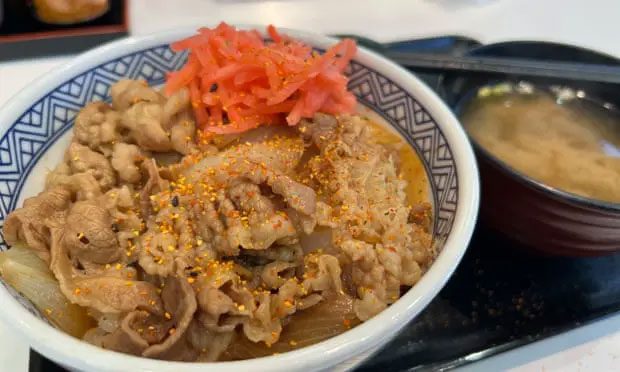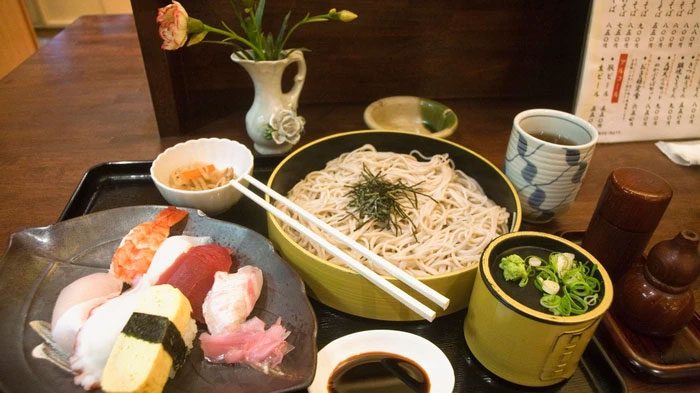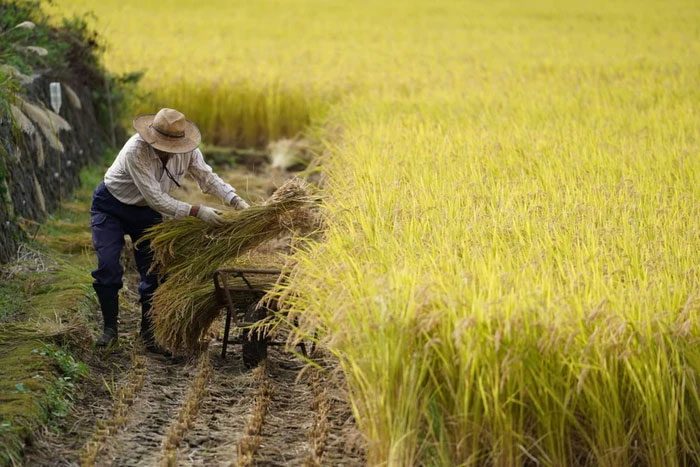Rice is a traditional food in Japan, but in modern society, there is a growing trend towards more convenient foods like bread.
The Yoshinoya restaurant in Osaka, Japan, is always bustling with customers. Diners flock here in such numbers that as soon as one person finishes and leaves a table, another steps in to take their place. The main dish that patrons order is gyudon (beef rice bowl), which means the staff does not need to spend too much time compiling the customers’ orders.
A serving of beef rice bowl here includes seasoned beef, onions, rice, along with side dishes such as pickled cabbage and miso soup. All of this costs just 632 yen (over 107,000 VND).
Gyudon is the top choice for office workers—those who have limited time and budget. Even after Yoshinoya raised its prices in 2021, they still turned to gyudon.

Gyudon is the top choice for office workers.
However, there is a notable trend occurring in the land of cherry blossoms: Japanese people are eating less rice than ever. As a result, gyudon is no longer as popular as it once was.
Those adhering strictly to washoku (traditional Japanese cuisine) are expressing concern over this trend. Thus, not far from the restaurant, a giant rice grain sculpture has been erected to remind the people of the country’s long history connected to rice.
The Decline of Rice in Japan
Dojima was once the rice exchange and trading center in Japan during the 18th and 19th centuries. This was an unprecedented prosperous time for brokers. However, this staple food has lost its status due to declining population, lifestyle changes, and diverse cuisines leading to shifting tastes.
According to the Japanese Ministry of Agriculture, the national rice consumption peaked in 1962, when the average person consumed 118 kg of rice per year, equivalent to over five bowls of rice each day. By 2020, the average consumption had dropped to just about 51 kg—more than half. Notably, in 2011, for the first time in history, Japanese households spent more on bread than on rice.
The phenomenon of kome banare (parting with rice) emerged during the rapid economic growth period, when Japanese people began consuming more wheat-based products like bread and pasta.

Japanese people are shifting towards wheat-based products. (Illustrative image).
Reasons Why Japanese People Are Turning Away from Rice
In the post-war period, families had limited food choices, and multigenerational households dominated, making rice a staple food. However, the rise of nuclear families (families consisting of parents and children) combined with life pressures has led many to choose convenient foods over traditional meals. The typical Japanese breakfast of rice, grilled fish, miso soup, and pickles is gradually being replaced by simpler options like toast and boiled eggs.
According to a recent survey by rice distributor Makino, 84.8% of respondents stated they eat rice daily, but of those, 68.1% only consume rice once a day.
Nanami Mochida, a teacher near Tokyo, stated: “Eating bread is much more convenient, especially in the morning. Preparing a traditional Japanese breakfast takes a lot of time. You need to wash the rice and it takes from 30 minutes to an hour to cook rice in a rice cooker.”

Japanese people are increasingly prioritizing quick-preparation foods.
The Fukushima neighborhood in Osaka once had over 50 rice shops, but now only five remain. The owner of one rice shop stated: “There are so many food choices today that people no longer think about rice. Even those who enjoy cooking find rice monotonous; there’s only one way to prepare it. But in reality, there are many delicious ways to cook rice.”
Yukari Sakamoto, author of the book Food Sake Tokyo, commented: “The quality of bread and the number of bread shops are increasing, making it easier to buy bread. Rice isn’t cheap either, so many people will opt for bread or noodles.”
With consumption declining, producers are striving to tap into foreign markets to capitalize on the global Japanese food craze. Japan’s rice exports increased from 4,515 tons in 2014 to 22,833 tons in 2021, a fivefold increase in seven years, with one-third of the exports going to Hong Kong.
However, exports still account for less than 0.5% of Japan’s domestic rice production, which is why agricultural cooperatives are encouraging restaurants to serve more donburi (Japanese rice bowls).

Producers are striving to export rice to the world.





















































